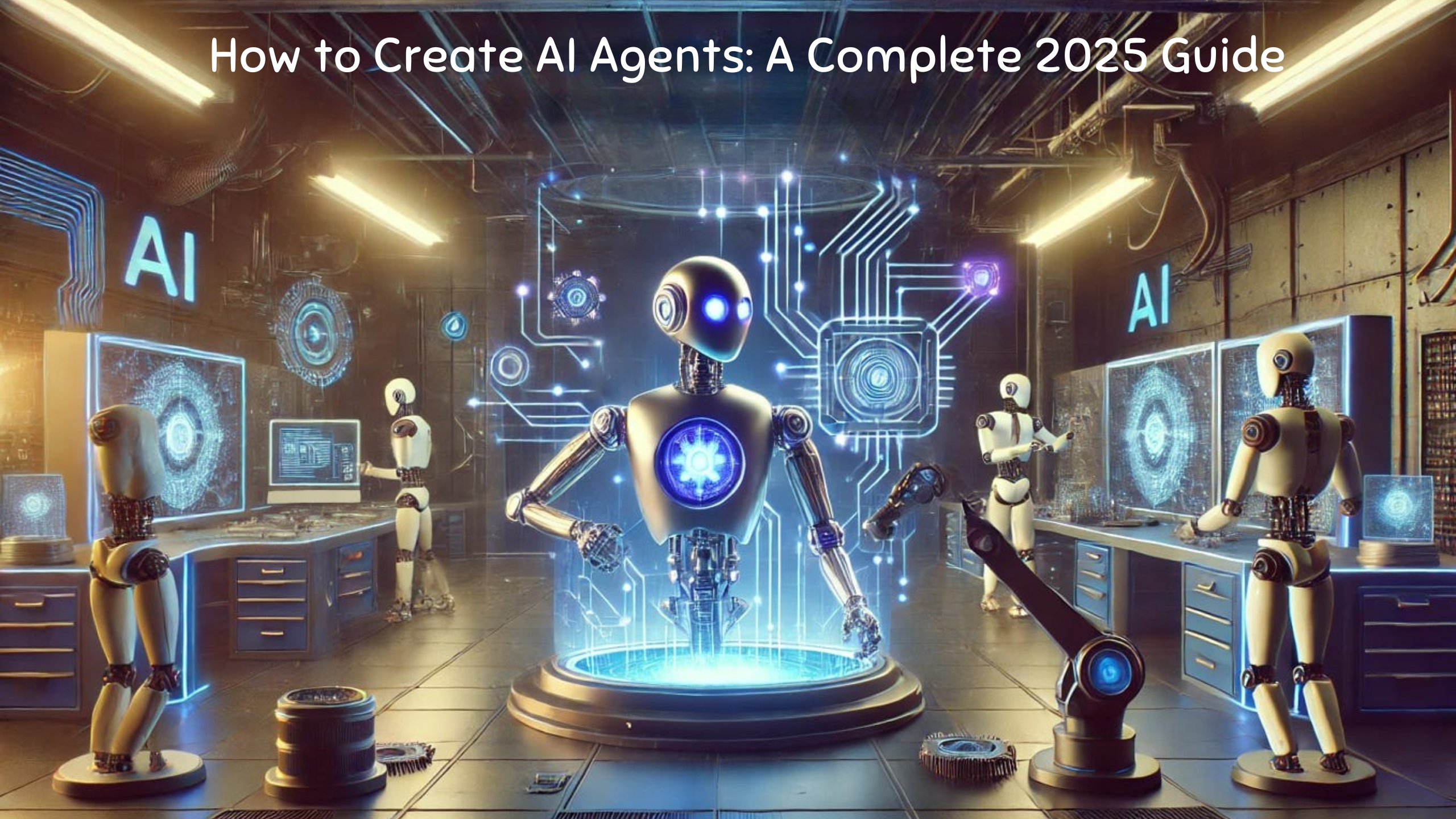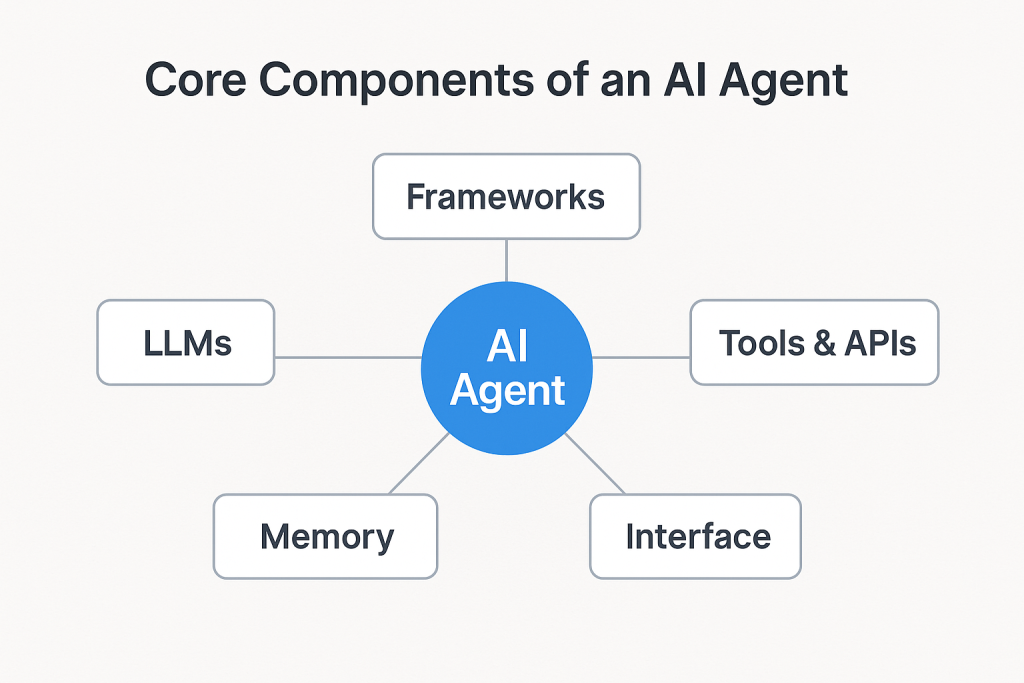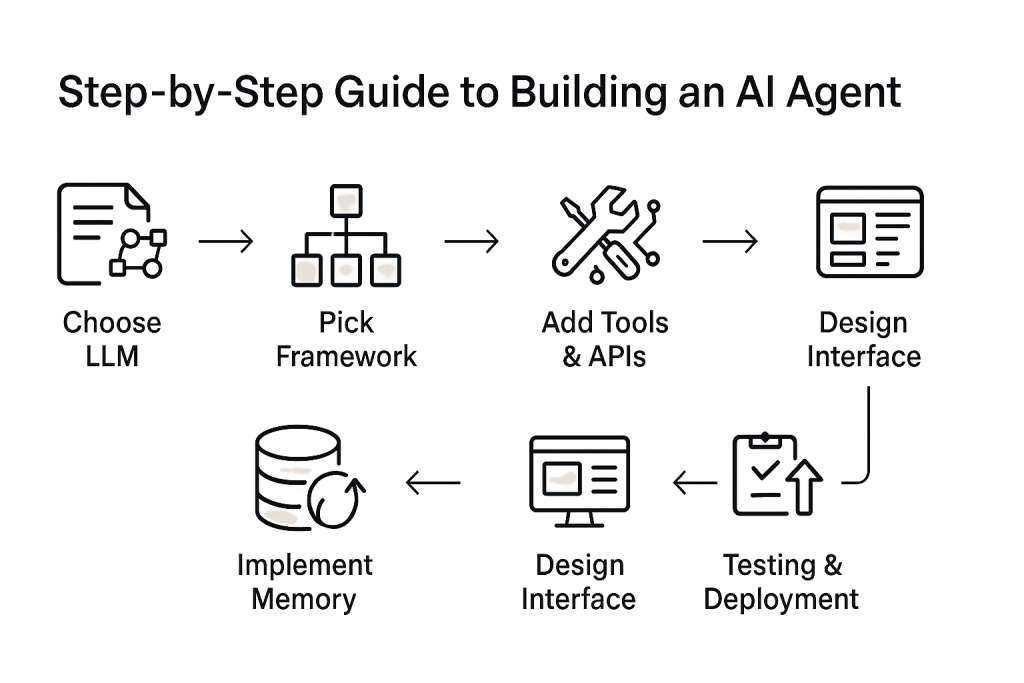
Artificial Intelligence isn’t just about chatbots anymore—it’s about AI agents that can think, learn, and act autonomously. Businesses, creators, and developers are asking the same question: How do you build an AI agent that works in the real world?
This guide will break down how to create AI agents, the tools you need, and the step-by-step process. Whether you’re a business owner looking to automate workflows, a developer experimenting with LLM-powered applications, or simply curious about the future of AI automation, you’ll walk away with the confidence to build your first AI agent.
Whether you’re a business owner, a developer, or a student of Gignaati AI Academy, this guide will give you the blueprint to build your first AI agent with confidence.
An AI agent is more than just a chatbot. Instead of giving one-off answers, it can:
AI agents vs Chatbots:
👉 Example: Instead of only answering “What’s the weather?”, an AI agent could check your calendar, see you’re traveling to New York, and send you a weather update plus packing tips.
For a deeper breakdown of AI agent definitions, real-world examples, and different types, check out this detailed guide on what are AI agents.
The rise of GPT-5, Claude, Google Gemini, and open-source LLaMA 3 & Mistral makes building AI agents faster and easier than ever.
Key reasons to start today:
👉 If you want to future-proof your business or career, learning to build AI agents is essential.
Large Language Models like GPT-5 or Claude power reasoning, natural language understanding, and decision-making.
Frameworks such as LangChain, AutoGen, or CrewAI provide structure and orchestration.They connect models, tools, and workflows to make agents functional and scalable.
Agents rely on APIs and integrations like CRMs, calendars, or databases. These expand capabilities, letting agents perform real-world tasks automatically.
Memory systems store past interactions for context retention and personalization.Vector databases like Pinecone or FAISS allow agents to learn and adapt over time.
The interface is how users interact—via chat apps, dashboards, or voice.It defines the user experience and accessibility of the AI agent.

Ask these before building:
💡 Pro Tip: Ensure AI compliance—your agent should be transparent, unbiased, and privacy-safe.
Compare OpenAI GPT-5, Claude 3.5, Google Gemini, and LLaMA 3.
Platforms like LangChain, AutoGen, and CrewAI are great starting points. If you’re new, structured learning through the Gignaati AI Agent Master Class can help you master these frameworks step by step.
Examples:
Use vector databases to store interactions, enabling agents to recall context.
Choose between chat windows, dashboards, mobile apps, or voice assistants.

Modern AI agents can:
Expect self-improving AI systems that:
At the same time, AI governance, ethics, and compliance will become crucial.
Learning how to create AI agents is more than coding—it’s about building the next layer of digital intelligence. With the right LLMs, frameworks, and APIs, you can design an AI automation system that solves real problems and drives growth.
Ready to build your first AI agent? Start small with a no-code tool, experiment, and scale. Or, accelerate your learning with Gignaati’s AI Trusted Platform, where you’ll find hands-on projects and expert-led tutorials to guide your journey.
An AI chatbot answers simple queries, while an AI agent is autonomous—it can reason, plan, and act across platforms.
Not always. No-code AI platforms allow anyone to build agents, but coding gives greater flexibility.
AI development costs range from free open-source tools to enterprise AI solutions costing thousands monthly.
Customer support, healthcare, finance, logistics, and marketing are the top adopters, but all sectors can benefit.
Yes—if designed with privacy, compliance, and ethical safeguards. Always follow local regulations.
Explore Gignaati.com – where top AI innovators showcase verified AI agents for real-world solutions.
© 2025 Gignaati is a product of Smartians.ai. All rights reserved.